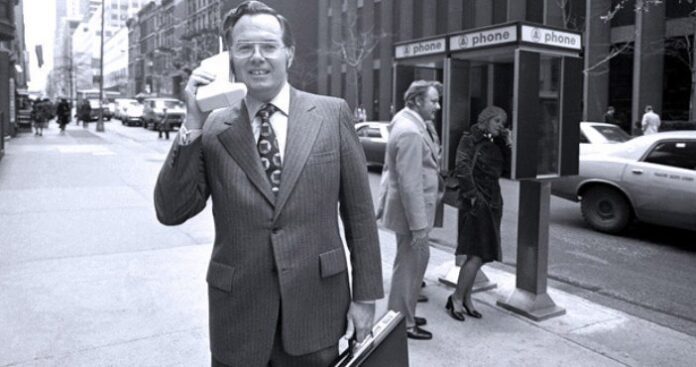Editor’s Note: RCR Wireless News goes all in for “Throwback Thursdays,” tapping into our archives to resuscitate the top headlines from the past. Fire up the time machine, put on the sepia-tinted shades, set the date for #TBT and enjoy the memories!
Wireless will solve the digital divide … right?
WASHINGTON-Wireless technology increasingly is seen as the end-all, be-all to the digital divide issue. But will it get here soon enough? The Clinton administration, through the National Telecommunications and Information Administration and the Rural Utilities Service, said last month that wireless solutions to the digital divide-both fixed and mobile-are not quite here. And while wireline services such as digital subscriber lines and cable modems are being deployed, they aren’t available in rural America. The digital divide describes the gulf that exists between those who have access to advanced telecommunications and those who don’t. The divide is both economic-rich vs. poor-and geographic-rural vs. suburban. President Clinton has been using the bully pulpit of the presidency to highlight the digital divide, urging telecommunications companies to bring advanced technologies to rural and economically disadvantaged areas. … Read more
TDMA vs. CDMA
CANCUN, Mexico-The big push to interoperate GSM and TDMA standards is well under way, allowing customers using either standard to roam around the world and giving U.S. TDMA operators a breath of life in their ongoing struggle with CDMA carriers for domestic market share. The future growth of Time Division Multiple Access technology seems limited in the United States, but in Latin America, where wireline networks are expensive and sparse, TDMA is expected to thrive. For TDMA operators around the world, the deployment of the EDGE third-generation data solution will bring the TDMA community and its customers to an entirely new level in terms of speed and services. Now three years in the making, EDGE, or Enhanced Data for Global Evolution, is expected to provide users with data rates up to 384 kilobits per second, a rate faster than CDMA’s 1XRTT and GSM’s General Packet Radio Services data solutions. … Read more
Let’s listen to the Internet on our phones
BOSTON-PhoneRun Inc. and Lucent Technologies Inc. said they will jointly market to service providers a mobile Internet service called “phonecasting,” a media network of Internet-sourced audio channels for news, entertainment and shopping available to any telephone via voice-enabled technology known as “voicetone.” PhoneRun’s service will run on Lucent’s Mobile Communications System which includes a public switched telephone network gateway, interactive voice response system, VoiceXML browser, Internet gateway, Wireless Application Protocol and short messaging service interfaces, e-mail delivery and notification, and distributed network management system. … Read more
Survey says …
SAN FRANCISCO-When people in Atlanta think of the top two wireless service providers, BellSouth Wireless Services and Sprint PCS come to mind. In Minneapolis, the top two are AT&T Wireless Services Inc. and Sprint PCS. And in San Diego, it’s Sprint PCS and Vodafone AirTouch plc. These findings come from Telephia Inc., in partnership with Harris Interactive, which polled wireless users and non-users in their respective markets to better understand wireless brand awareness, buying and usage habits, customer satisfaction, interest in new product offerings and key factors affecting switching and loyalty. … Read more
Early WAP skeptics
While the Wireless Application Protocol has provided a common standard for microbrowser technology, several firms are looking to offer their own flavor of the wireless Internet experience, and not all are convinced WAP will remain the popular standard it is today. Pixo Inc. is one such firm. Although a member of the WAP Forum, the company believes that future packet-based wireless networks will support Internet Protocol and therefore will negate the necessity for WAP to deliver Internet content to wireless phones. Also, Pixo feels handsets need a more robust user interface so wireless Internet services are easier to use. … Read more
Snap a modem on your Palm and off you go to the Internet
OmniSky Corp. Chief Executive Officer Patrick McVeigh last fall promised to “kick the barn door open” to the Internet when he introduced a beta version of an end-to-end wireless Internet solution for the Palm V handheld computer. It’s time to see how wide the door opened. McVeigh last week kicked off commercial sales of the solution, which gives Palm V users a package of hardware, software, content, network access and support needed for the device to access the Internet wirelessly. Key to the package is the Minstrel V wireless modem from Novatel Wireless Inc., offered for $300, which snaps onto the back of the Palm V device. AT&T Wireless Services Inc. is offering unlimited Cellular Digital Packet Data network access for a flat fee of $40 a month. Rounding out the solution is a collection of 2,200 Web sites, portals and search engines that have agreed to optimize their content for the OmniSky system, as well as unified user interface software to navigate those sites and access to up to six POP3 e-mail accounts. … Read more
Check out RCR Wireless News’ Archives for more stories from the past.

